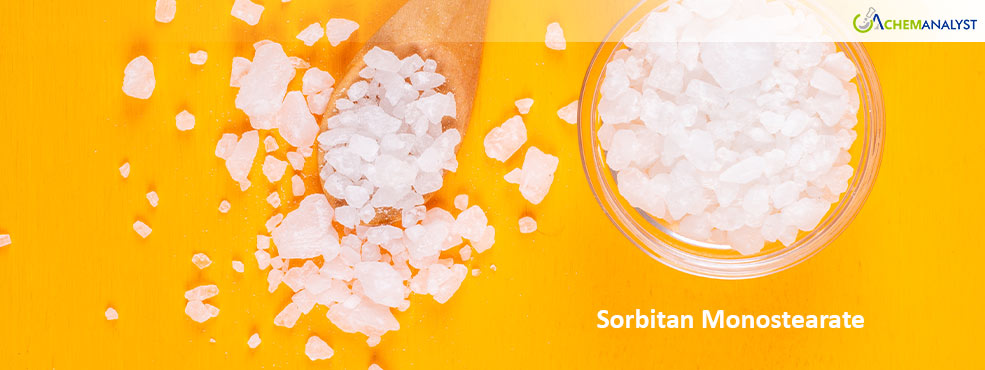Welcome To ChemAnalyst

Sorbitan Monostearate prices dropped drastically in Chinese and international markets throughout February 2025 amid oversupply, enhanced logistics, and dampened demand in major segments. Market experts affirm the downtrend indicates an impressive turnaround following relative stability in late 2024.
Sorbitan Monostearate, a key emulsifier utilized throughout food processing, personal care, and pharmaceuticals industries, witnessed price declines between 12-15% within key markets. As a stabilizer in infinite formulae wherein water and oil ingredients are required to be present together, this industrial commodity is essential.
Sorbitan Monostearate markets undergo the strongest price correction in the last quarters. Manufacturers who overordered in hopes of firmer 2025 demand now rush to dispose of surplus inventory.
The price decline results mostly from massive oversupply. Producers overestimated 2025 demand and increased Sorbitan Monostearate production in late 2024. The excess created, coupled with merely moderate global demand, inundated domestic markets and prompted indiscriminate destocking measures.
Suppliers adopted several strategies to dispose of their Sorbitan Monostearate stock, such as volume discounts and promotion. Mid-range manufacturers were especially under pressure to clear stocks in a hurry, even settling for reduced profit margins to enhance cash flow.
Freight rates fell significantly, putting additional bear pressure on prices of Sorbitan Monostearate. European shipping prices fell 1.86% to $1,578 per TEU, and United States shipping prices were also similarly affected. These increases rendered Chinese Sorbitan Monostearate competitive in foreign markets but also put domestic prices into suppression.
The post-Spring Festival season customarily sees subdued industrial activity, and February 2025 was no different. Key users of Sorbitan Monostearate ran at less than full capacity, which further suppressed demand. Some even started looking at alternative emulsifiers, given increasing consumer appetite for natural products.
Raw material prices also decreased sharply. Stearic acid, the main raw material used in the production of Sorbitan Monostearate, reduced in price as Southeast Asian palm oil producers produced more. The raw material cost decrease directly influenced Sorbitan Monostearate pricing models across the supply chain.
The Asian freight conditions played a significant role in the overall market dynamics. Rates in Intra-Asia dropped by 18% during late January and continued into February. This improvement in logistics, in addition to the strengthening of the Chinese yuan, provided supportive grounds for stabilizing prices, but ultimately continued with the downtrend.
Sorbitan Monostearate applications span numerous industries, functioning as an emulsifier in foods, a stabilizing agent in cosmetics, and a binding ingredient in pharmaceuticals. Despite its versatility and essential role in multiple sectors, the current oversupply situation overwhelmed demand across all application areas.
Market analysts forecast the Sorbitan Monostearate market will eventually rebalance as manufacturers adjust their production levels and surplus inventory levels decline. Nevertheless, they advise that prices are likely to remain depressed until early spring as the market adjusts.
Manufacturers have to be mindful of their Sorbitan Monostearate buying strategies during this unstable environment. Present circumstances offer buying opportunities, but the market will eventually stabilize as supply and demand level out.
For businesses that depend on Sorbitan Monostearate as a key ingredient, this price drop provides short-term relief in the face of other increasing costs. Food processors, cosmetics producers, and pharmaceutical firms are enjoying the good times now, although analysts advise locking in longer-term contracts to take advantage of prevailing market conditions.
We use cookies to deliver the best possible experience on our website. To learn more, visit our Privacy Policy. By continuing to use this site or by closing this box, you consent to our use of cookies. More info.
